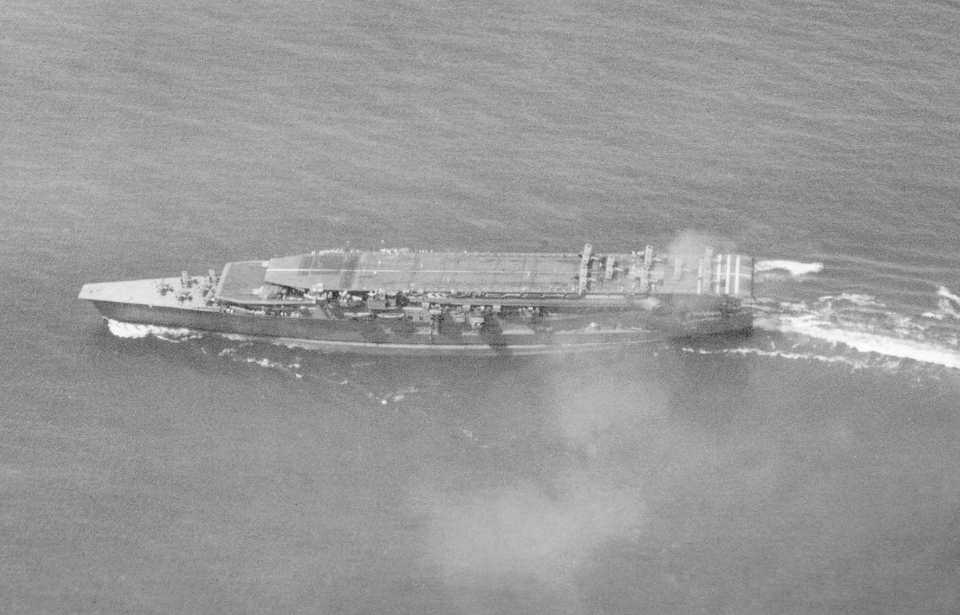Early on in World War II, it looked like the Imperial Japanese Army and Navy would be an unstoppable force. Their servicemen were brave and willing to die for the cause, while those in charge were known to be bright strategists. An important part of the Japanese strategy was the way they used aircraft carriers to protect and aid their pilots.
As such, the best way to defeat them was to take out those vessels.
Japanese aircraft carrier Kaga
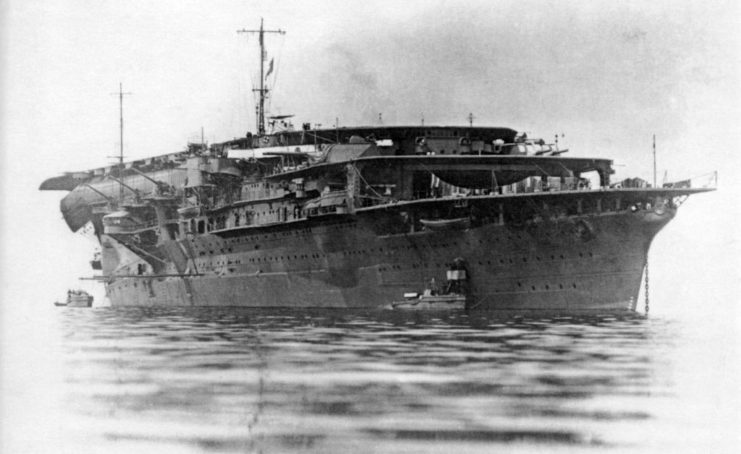
Laid down in 1920 and launched the following year, Kaga was intended to be a Tosa-class battleship. However, following the signing of the Washington Naval Treaty in 1922, the vessel was scheduled to be scrapped, despite the agreement allowing two battleships to be turned into aircraft carriers. The decision was made to transform the battlecruisers Amagi and Akagi, but the former was lost during the Great Kantō earthquake of 1923, leading to the decision to convert Kaga.
Kaga’s conversion was done by adapting the vessel’s flight deck into three superimposed ones, among other changes. She was also armed with one twin-gun Model B turret on each side of the middle flight deck and six in casemates aft, as well as 10 Third Year type 20 cm/50 caliber guns, the latter of which had formed the primary battery for Japan’s heavy cruisers during WWII.
After undergoing sea trials following her commission, Kaga officially joined the Imperial Japanese Navy as its third aircraft carrier in November 1929, alongside Akagi and Hōshō.
Kaga‘s early service with the Imperial Japanese Navy
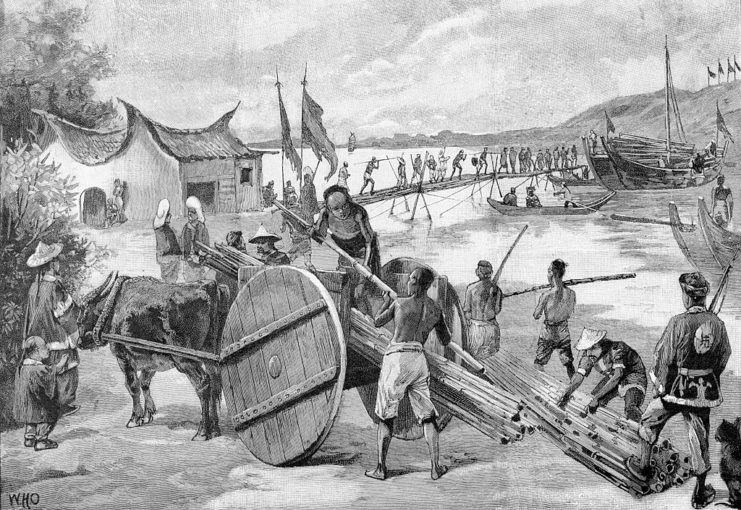
Kaga was pressed into action soon after she was completed, and was deployed to support the Imperial Japanese Army as part of the Navy’s 3rd Fleet during the Shanghai Incident in 1932. The bombers that supported Japanese ground troops during the conflict came from the aircraft carrier and Hōshō.
Following the Shanghai Incident, Kaga underwent a number of modifications, as she had been deemed the inferior aircraft carrier within the Imperial Japanese Navy’s fleet. The vessel was then used during the 1937-45 Second Sino-Japanese War, which, again, saw Japan take on China. Kaga had no need to leave her own waters and was regularly the base of operations for aircraft taking off and engaging in bombing missions.
The war was not considered to be a success for the Japanese forces, who surrendered to the Chinese and returned to them the territory that had previously been lost.
Japanese attack on Pearl Harbor
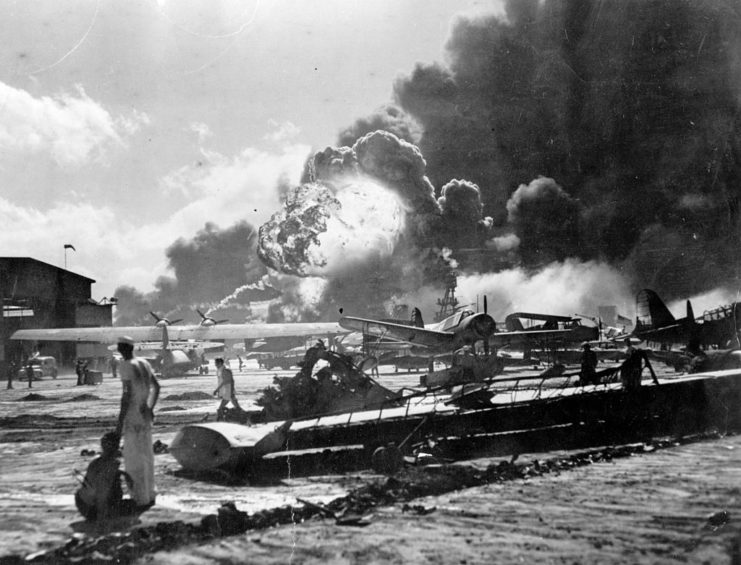
In 1941, the Japanese Imperial Army tasked Marshal Admiral Isoroku Yamamoto with planning a large-scale offensive against the US Navy‘s Pacific Fleet. This wound up being the December 7 attack on Pearl Harbor, in which Kaga played a role. For the attack, the aircraft carrier had ferried 18 Mitsubishi A6M Zeros, 27 Nakajima B5Ns and 27 Aichi D3As.
The bombers and fighters that took off from Kaga were successful in their missions, scoring hits on the USS Maryland (BB-46), West Virginia (BB-48), Oklahoma (BB-37), Nevada (BB-36), California (BB-44) and Arizona (BB-39). In addition, they destroyed 20 grounded American aircraft and took out a single airborne one.
Once her mission at Pearl Harbor was complete, Kaga returned to Japan. Her work in the Pacific Theater, however, was far from over.
Kaga‘s continued World War II service
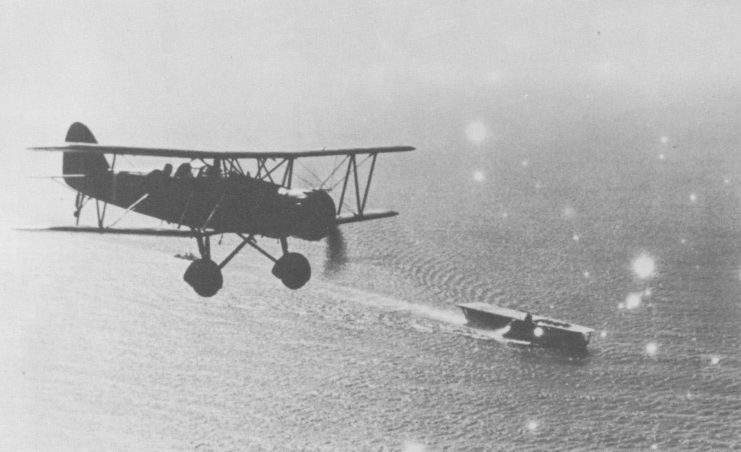
Following the attack on Pearl Harbor, Kaga was moved to Truk, in Micronesia. From there, she supported the Battle of Rabaul, providing aircraft for the initial airstrike. In February 1942, her aircraft took part in a sortie against an American battleship in the Marshall Islands. During the effort, she ran into a reef and had to be temporarily removed from service for repairs, before returning to duty.
Kaga‘s final engagement was during the Battle of Midway. She departed from the Inland Sea at the end of May 1942, along with the rest of the Combined Fleet, and set up around 290 miles northwest of Midway Island.
On June 4, 1942, the ship was relentlessly attacked by American dive bombers. The first attempt was initially repelled by the Japanese, while the second, led by US Navy aviator C. Wade McClusky, was much more successful. Twenty-five Douglas SBD Dauntless from the USS Enterprise (CV-6) appeared over the ship, nearly undetected, and hit Kaga with a 1,000-pound bomb and multiple 500-pound bombs.
After failed attempts to repair the damage, the aircraft carrier sunk into the Pacific Ocean.
Aftermath of the Battle of Midway
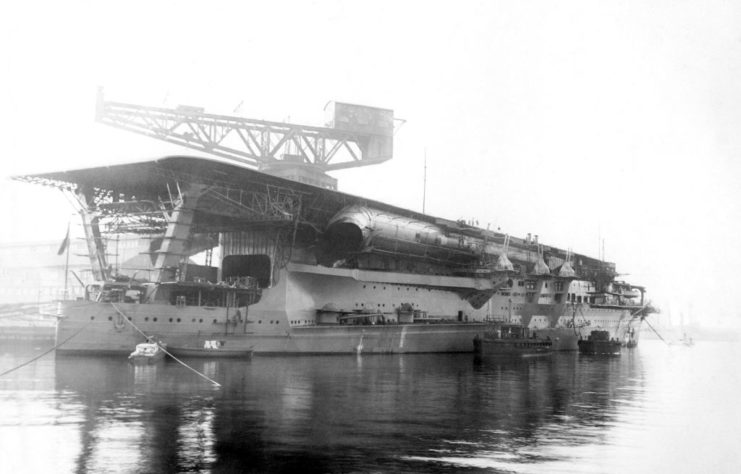
While some sailors were rescued from Kaga, a large number perished; 811 of those aboard the vessel, many of them engineers, armorers and mechanics, were killed. That’s not to mention the number of pilots who lost their lives. Government and military officials, focused on looking invincible, were worried about news reaching the Japanese public, and the surviving sailors were snuck back into the country to prevent Midway’s story from getting out.
More from us: Operation Unthinkable: Winston Churchill’s Plan to Invade the Soviet Union
Are you a fan of all things ships and submarines? If so, subscribe to our Daily Warships newsletter!
The battle, itself, is seen as a turning point in the Pacific Theater. In addition to Kaga, the Imperial Japanese Navy lost three other aircraft carriers: Akagi, Sōryū and Hiryū. The loss of the vessels and the aviators who manned their aircraft significantly impacted Japan’s effectiveness, and the country’s forces were never able to recover. For many, it’s one of the major contributing factors for its defeat in the war.
